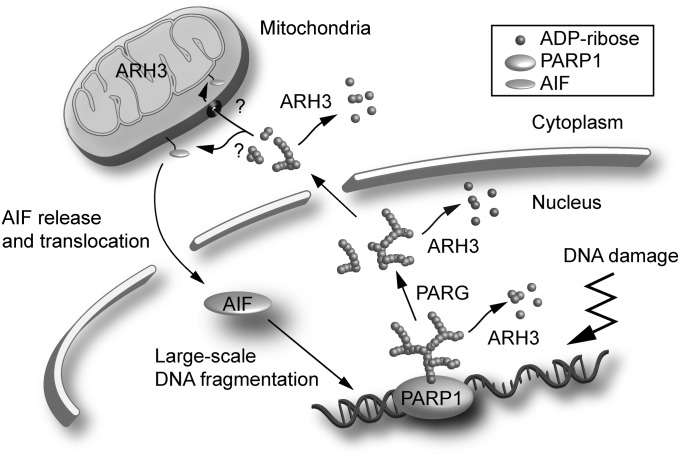Fig. 6.
Model for a role of ARH3 in PAR degradation and AIF-mediated cell death. Overactivation of PARP1 by widespread DNA damage results in poly-ADP ribosylation of PARP1 and other acceptor proteins in the nucleus. PARG hydrolyzes PAR attached to acceptor proteins such as PARP1 to generate protein-free small PAR molecules, thereby facilitating its translocation to the cytoplasm and mitochondria. ARH3 located in the nucleus and cytoplasm hydrolyzes PAR. PAR may bind to AIF anchored in mitochondrial membrane, releasing it to the cytoplasm. Once in the cytoplasm, AIF translocates to the nucleus via its nuclear localization signal. In nucleus, AIF recruits nucleases such as cyclophilin A and H2AX, resulting in large-scale DNA fragmentation. ARH3 is also located in the mitochondrial matrix.

